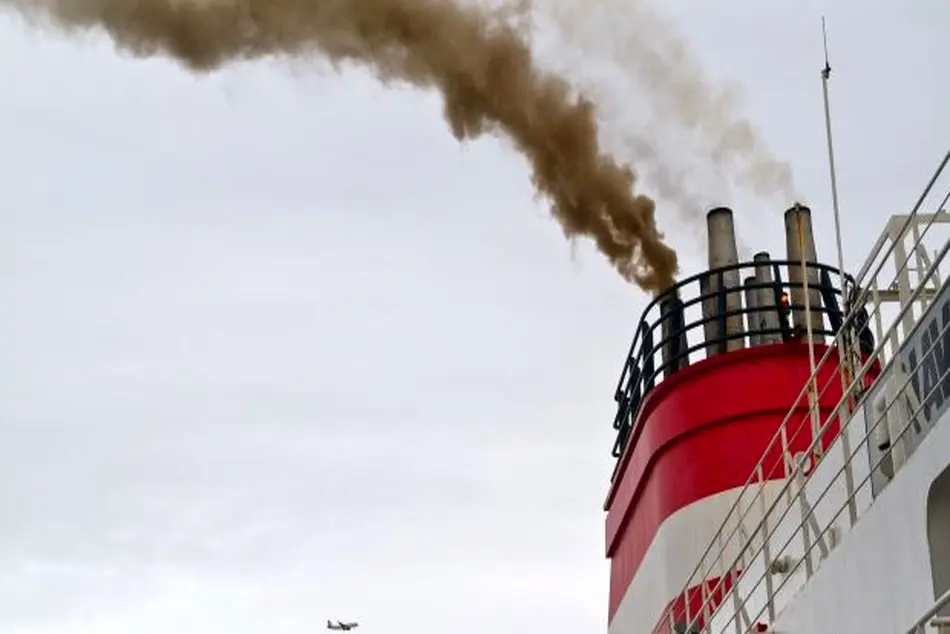Challenges on the implementation of the EU MRV

TIN news: Kostas Vlachos, Chief Operating Officer, Consolidated Marine Management Inc., addressed the “Challenges on the implementation of the EU MRV” from the Ship Manager Perspective at the 2017 GREEN4SEA Conference. Mr. Vlachos focused on the preparation of the Monitoring Plan and suggested that a Risk based approach is certainly required. He further presented the required Data Flow Activities for the control of data and referred to issues concerning the Quality assurance and Reliability of IT along with the required Internal Reviews and Validation of data.
Ship operators are currently facing many challenges with the implementation of the EU MRV plan which takes into consideration the EU Regulation about the MRV and requires assessment by an accredited verifier until August 31st, 2017.
Our opinion is that the EU MRV plan is a new complete management system because:
- New Detailed and prescriptive procedures and records are required with new roles duties and responsibilities
- Documentation control for amendments and new versions and storage of records of MP system are required
- Development of Risk Assessments for a Flow Chart of Activities
- New Maintenance and calibration processes are established for instruments that in the past they were not in the maintenance plans of the company
- Internal and external assessment and verification is required
- Periodical Management Review is required
- New Document of compliance covering vessel and company is issued.
In fact, we believe that new bureaucratic system is created with new meanings for shipping such as Materiality, Uncertainty, Inherent Risk, Control Risk, Detection Risk, completeness, accuracy, Consistency, transparency and relevance of information as per ISO 14064. It brings additional administrative workload to the ship personnel putting at risk the safety of the ship and the personnel onboard. The MP compromises the real controls for restriction of emissions and pays a special attention to the system rather to the human and the environment. Also, we believe, that the MP contains grey areas and introduces a verification process with complex levels of verification such as the independent reviewer.
Its contents are divided into six main sections:
A. Revision record sheet
B. Basic Data
C. Activity Data
D. Data Gaps
E. Management
F. Further Information
Regarding the Monitoring of fuel consumption, the following issues are important:
- Methods used to determine fuel consumption of each ES;
- Procedures for determining fuel bunkered and stock takes in FT
- CROSS –CHECKS between BDN and stock takes;
- Description of measurement equipment involved;
- Procedures for recording, retrieving, transmitting and storing information regarding measurements;
- Method for determination of density;
- Level of uncertainty associated with fuel monitoring;
- Procedure for ensuring quality assurance of measuring equipment
- Method for determining and recording the FC on laden voyages
Also, you will need to declare in the MP which of the following methods you will follow in order to determine the fuel consumption for each emission source:
- Bunker Fuel Delivery Note (BDN) and periodic stock takes of fuel tanks;
- Bunker fuel tank monitoring on board;
- Flow meters for applicable combustion processes;
- Direct CO2 emission measurements
The level of uncertainty is something new and its verification is very important. In particular, the EU MRV Legislation states “The Company should complete and document an uncertainty assessment for each method selected”. The factors that may affect the uncertainty are the Equipment, the Processes, the People, the Material, the Environment and the Management systems that you apply.
Also companies have the obligation to report the voyages and should develop procedures for the list of voyages coming under the monitoring scheme. Software based on noon reports, departure and arrival reports shall make an extract of the required voyages. The department and the person in charge shall be reported. Attention is needed the voyage to cover berth to berth and not pilot to pilot. Also, validation of the data is required as well as control of risks related of potential errors, omissions or misrepresentation and processes for collecting, processing, consolidating and reporting List of voyages and information.
The table herebelow compares the EU MRV and the IMO system for CO2 ship emissions.
| EU MRV | IMO Fuel Data Collection System | |
| Monitoring | Ships 5000 GT and above for per Voyage to/from EU port monitoring and on an annual basis
EU Monitoring Plan Starting 1st January 2018 |
Ships 5000 GT and above
Annual basis for ALL voyages Updated SEEMP (Part II) Starting 1st January 2019` |
| First monitoring period | 2018 | 2019 |
| Exemptions | Warships, naval auxiliaries, fish-catching / processing ships, ships not propelled by mechanical means and government ships used for non-commercial purposes | TBD |
| Parameters | Amount and emission factor for each type of fuel consumed
CO2 emitted per voyage falling in EU MRV/per annum Cargo carried Total Transport work Total Distance travelled Total Time at sea & in port Average Energy EFFICIENCY |
Total Annual Fuel consumption
– Design deadweight – Distance travelled over ground (O/G) Hours underway – |
| Reporting | All the above parameters
Ship Name IMO number Port of Registry Name of Shipowner Name of company with address, email and details of contact person EEDI or Estimated Index Value (EIV) Identity of verifier Ice class if applicable |
All the above parameters
– IMO Number – – –
EEDI if applicable – Ice class if applicable |
| Verification | EU accredited verifiers
ISO standard procedures for the assessment of MP and verification of ER |
Flag Administration/ recognized organisations
IMO guidelines |
| Reports to | European Commission | Flag state |
| Certification | Document of Compliance (June 2019) | Statement of Compliance |
| Publication | Distinctive public database | Anonymous public database |
| Disclosure | Public | Confidential |
